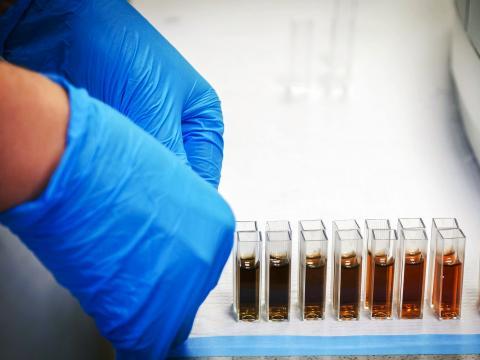
Date: Thursday 11th of September at 12:30-13:10 in Árnagarður room 306
Title: Dose-sparing effects of adjuvants and alum in vaccination
Speaker: Jenny Lorena Molina Estupiñan, PhD student, Department of Immunology, Landspítali and Faculty of Medicine, School of Health Sciences, University of Iceland
Abstract: Jenny will tell us about her recently published paper in Frontiers in Immunology. Childhood vaccination provides protection against infectious diseases, but multiple vaccinations are required to achieve this. In situations like influenza epidemics or COVID-19 pandemic, vaccine demands may exceed production capacity, highlighting the need for dose-sparing strategies. Adjuvants can boost and modulate immune responses to vaccines and could reduce the antigen doses needed to confer protection. Herein we evaluated the dose-sparing effects of the novel adjuvants dmLT, mmCT, CAF01, and CAF08b and alum (aluminum hydroxide) on primary neonatal antibody (Ab) response to a conjugate vaccine against Streptococcus pneumoniae, Pn1-CRM197, and a recombinant influenza hemagglutinin (HA) protein vaccine. The primary Ab levels of neonatal mice immunized once with a full dose of Pn1-CRM197 or HA were low. mmCT and CAF08b enhanced Pn1-specific IgG Abs elicited by fractional doses of Pn1-CRM197, providing eightfold dose sparing of the vaccine, whereas dmLT and CAF01 provided fivefold and twofold dose sparing, respectively. These adjuvants elicited protective Pn1-specific Ab levels against bacteremia (91%–63%) and pneumonia (50%–38%) in neonatal mice when combined with a half-dose of Pn1-CRM197. In addition, mmCT, CAF01, and CAF08b enhanced the persistence of Pn1-specific IgG Ab-secreting cells (ASCs) in bone marrow compared with a full dose of vaccine only. With the influenza HA vaccine, CAF08b provided 40-fold dose sparing, while CAF01 and mmCT provided twofold dose sparing. CAF08b induced the micro-neutralization (MN) titers above protective levels in 100% and 86% of mice receiving 1/8 and 1/40 of HA dose, respectively, and CAF01 in 88% and 50% of mice receiving 1/4 and 1/8 dose of HA, respectively, whereas only 38% of mice receiving a full-dose HA without adjuvant reached the protective MN levels. Furthermore, these adjuvants provided cross-protective Abs and ASCs against a closely related heterologous influenza strain. In contrast, aluminum hydroxide did not provide any dose-sparing effects. Collectively, our results demonstrate that mmCT, CAF01, and CAF08b enhanced the protective humoral responses and had large dose-sparing effects on both Pn1-CRM197 and HA vaccines, although the adjuvant effect was clearly vaccine-dependent. The results support the potential use of safe adjuvants in situations when vaccine production capacity is limited, including vaccination of pediatric populations that may be of high risk.
Biography: Jenny Lorena Molina Estupiñan is a PhD student in the Biomedical Science program at the University of Iceland and is working on her PhD project in the Vaccine Research Group at the Department of Immunology at Landspitali. This group is led by Professor emerita Ingileif Jónsdóttir and Associate Professor Stefanía P. Bjarnarson. The group’s main research focus is on limitations in the neonatal immune system and how poor vaccine responses can be circumvented by vaccination strategies, including adjuvants and immunization routes, like mucosal immunization. They use neonatal mouse models to study optimization of vaccine-induced immune responses against viral and bacterial infection, including pneumococcal infection using protein-polysaccharide-conjugate vaccines and influenza infection using a hemagglutinin (HA) vaccine. The project presented in Jenny’s seminar investigates the dose-sparing potential of novel adjuvants mmCT, dmLT, CAF08b, and CAF01 in comparison to the well-established adjuvant alum. Since adjuvants can boost immune responses and reduce the amount of vaccine needed to achieve protective immunity, this strategy offers a path toward lower vaccine doses and significant cost savings.
Reference: https://www.frontiersin.org/journals/immunology/articles/10.3389/fimmu.2025.1646677/full
